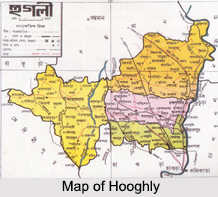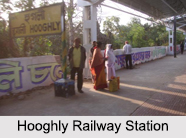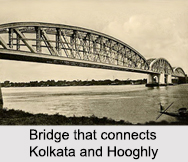 Hooghly is one of the heritage sites of West Bengal which still stands as the insignia of Dutch East India Company and French East India Company invasion amidst its archaeological wonders and historical relics.
Hooghly is one of the heritage sites of West Bengal which still stands as the insignia of Dutch East India Company and French East India Company invasion amidst its archaeological wonders and historical relics.
Hoogly is named after the Hooghly River and is alternatively known as Hoogli or Hugli. The Dutch and French have left their mark as historical relics in Chinsurah, and Chandannagar respectively, which even a casual onlooker cannot miss. Traces of the Germans and the Austrians can also be found at Bhadreswar. The Portuguese settled here in 1537, but were routed out by Shah Jahan, the Mughal emperor, in the year 1632. The British East India Company also established a factory here in 1651.
There are many places of historical interest in the district of Hoogly. To name a few Antpur, Bansberia, Bandel, Chandernagore, Kamrapukur, Jairambati, Tarakeswar, Serampur, Mahesh are popular places in Hooghly.
Antpur
Antpur, only 62 km away from Kolkata, has a plethora of temples, built mostly by Krishnaram Mitra, a local zamindar during the 18th century. It is basically a small town of terracotta temples, the most famous of them being that of Radha Govinda Jiu with exquisite terracotta carvings depicting stories from all the 18 Puranas.
 Bandel
Bandel
Bandel bears the mark of the Portuguese settlement through the Church and the Monastery. The name Bandel came from the Bengali word "Bandar" which means, "port". Bandel, appears to have been the port of Hooghly at the time of Portuguese and Mughals. It is about 2 km away from the station `Bandel`. The church has a small organ, three altars and several tombstones. In the middle of the church there is the statue of "One lady of Happy Voyage". As the centre of attraction it stands a ship`s mast in front of the Church which was presented by the captain of a vessel which had encountered a storm in Bay of Bengal and save by the grace of Virgin. Bansberia is known for the temples of Ananta Vasudeva and Hanseswari Temple.
Chandannagar
Chandannagar was once a French colony and is a beautifully laid out town on the bank of the Hooghly River and is only 37 km away from Kolkata. The churches, the convent and the residence of the French Administrator along the strand are interesting buildings left by the French. The major socio-cultural event in the city of Chandannagar is the Jagaddhatri Puja, which attracts massive crowds from all over the state of West Bengal. The festivities bring people together and bridges the past and the present. One of the main attractions of the Jagaddhatri idol of Chandannagar is the ornamental decoration of the Goddess with sola and the beautiful canvas of mats with paintings at the back of the image. It is said that the procession here is the second longest in the world, after Rio de Janeiro"s.
 Tarakeswar
Tarakeswar
Tarakeswar is a renowned place of pilgrimage and the greatest centre of the Shaiva sect in West Bengal. Tarakeswar Temple is a famous Shiva temple of the 18th century, located near Serampore. Only 58 km away from Kolkata, the place can be reached easily by train. People from all over the world come here to worship Lord Shiva, in the form of Tarakeshwar.
Chinsurah
Chinsurah was an important Dutch settlement from 1656 to 1825. And in 1825 Chinsurah and other Dutch settlements were ceded to the British in exchange for holdings in Sumatra. Hooghly and Chinsurah were constituted a municipality in 1865 and they even have colleges affiliated with the University of Calcutta and the University of Burdwan. Important structures like the Fort Gustavus, a church, 3 barracks and many old tombs are the testimony of the bygone days.
Serampore
Serampore was the hub of missionary activity from 1793 to 1834. Important newspapers in the pre-independence era came out of the place. It holds an essential place in Bengal`s history. Serampore used to be a Danish settlement till East India Company took over in 1845. Serampore is a pre-colonial town on the west bank of the Hooghly River and is the most urbanized of the subdivisions in Hooghly.
Visiting Information on Hooghly
The town of Hooghly is connected well via road and rail lines. There is no airport, however, the West Bengal government has planned to introduce Pawan Hans helicopters for easy transport. Hooghly is well-connected by suburban train lines in the Howrah-Burdwan main line. All trains except express trains and galloping local trains have a stop here. And via roadways, Hooghly is connected by the Grand Trunk road and the Delhi road.



















